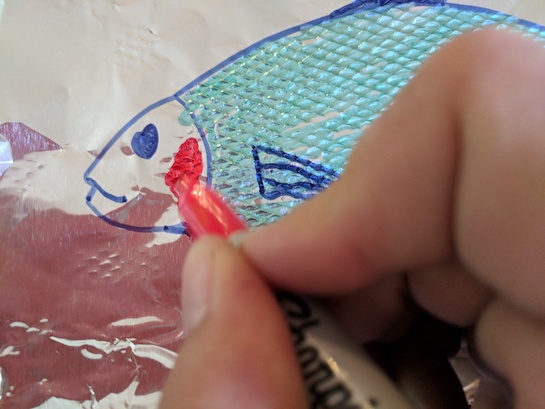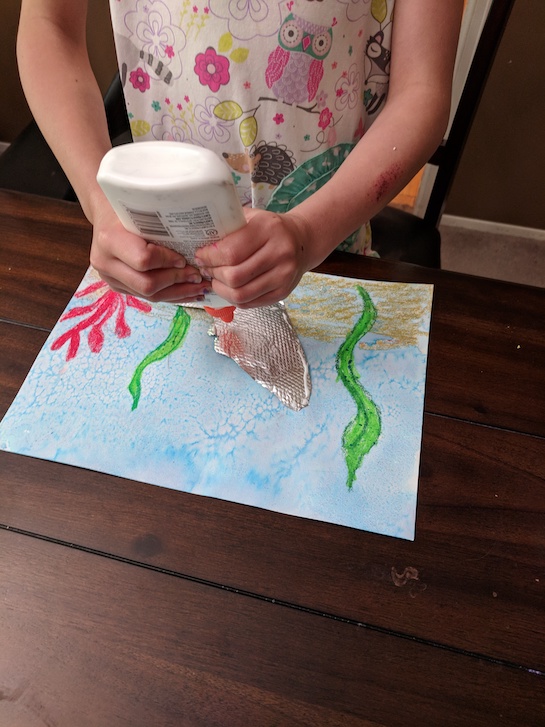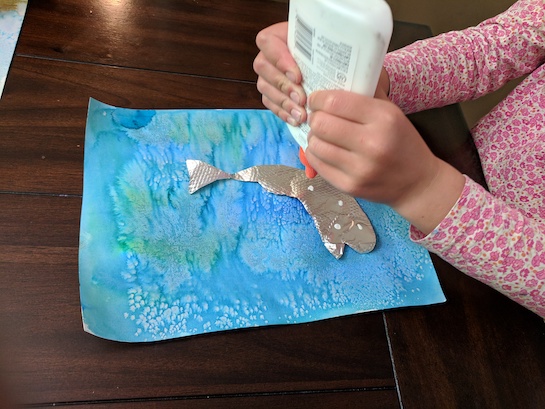Students will observe the art of Paul Klee then create a work of art in a similar style, using a fish as a focal point. Recommended for 3rd Graders.
Shape: 2-d figure created within joined lines. They can be irregular with curving edges (organic) or symmetrical with straight edges (geometric).
Texture: Tactile Texture – The way a surface feels to the touch. Visual Texture – The illusion of how an object would feel if it could be touched.
Emphasis (Focal point): the place the eye naturally travels to in a composition. Also described as the center of interest. It can be created using a contrasting element.
Pattern: repetition of elements in an organized way. This creates unity.
Unity: the connection of parts to create a sense of completeness. Unity and variety are important, balanced components of an interesting composition. Too much unity is boring and too much variety is chaotic.
Paul Klee (1879-1940): Paul Klee was born in 1879 to a German father and Swiss mother. Both parents were musicians. He grew up playing the violin and drawing. As a teenager he decided he liked drawing more than violin. He attended the Academy of Fine Arts in Munich, Germany. His early works were mostly colorless drawings and etchings. He viewed color as more of a decoration. This changed after a visit to the country Tunisia. He was fascinated by the light and color there and it changed his artwork and style forever. After that his paintings were usually very colorful. His artwork is a blend of Cubism, Surrealism and Expressionism. He taught art in Germany until he was forced to leave by the Nazi party. He finished over 9000 pieces of art in his lifetime.
Find the images: The Goldfish (1925), Around The Fish (1926), or Fish Magic (1925) by Paul Klee to show the class.

Gather materials.
Post elements, principles and vocabulary words listed above.
Print out “How to draw a salmon” PDF or copy onto a whiteboard to display steps for students.
How can you find the focal point (emphasis) in a composition?
What affects where your eye goes first? Size, contrasting color, shape or texture? There can be multiple correct answers.
How did Klee create emphasis?
They will make a work of art similar to The Goldfish (1925) by Paul Klee, demonstrating fish as the focal point.
Students will use good craftsmanship.




Lesson written by Rachelle Roberts, “How to Draw a Salmon” illustration created by Rachelle Roberts, used by permission. “Paul Klee.” Art Smarts 4 Kids; James. “10 Paul Klee Facts.” Primary Facts, 27 Sept. 2016, .
21st Century Thinking Skills
Observing, making connections, visualizing, sequencing, determining main idea, finding evidence, cause and effect, decision making, evaluating.
WA State Learning Standards
(VA:Cr1.2.3) a. Apply knowledge of available resources, tools, and technologies to investigate personal ideas through the artmaking process.
(VA:Cr2.1.3) a. Create personally satisfying artwork, using a variety of artistic processes and materials.
(VA:Cr2.2.3) a. Demonstrate an understanding of the safe and proficient use of materials, tools, and equipment for a variety of artistic processes.
(VA:Cr3.1.3) a. Elaborate visual information by adding details in an artwork to enhance emerging meaning.
(VA:Re8.1.3) a. Interpret art by analyzing use of media to create subject matter, characteristics of form, and mood.
(VA:Re9.1.3) a. Evaluate an artwork based on given criteria.
(VA:Cn11.1.3) a. Recognize that responses to art change depending on knowledge of the time and place in which it was made.
Please note: These lesson plans are intended for non-profit use only. Use of these plans for commercial purposes should give attribution to the Issaquah Schools Foundation and be accompanied by a nominal donation at www.isfdn.org/donate. Thank you.
Fueling Success for Every Student, Every School